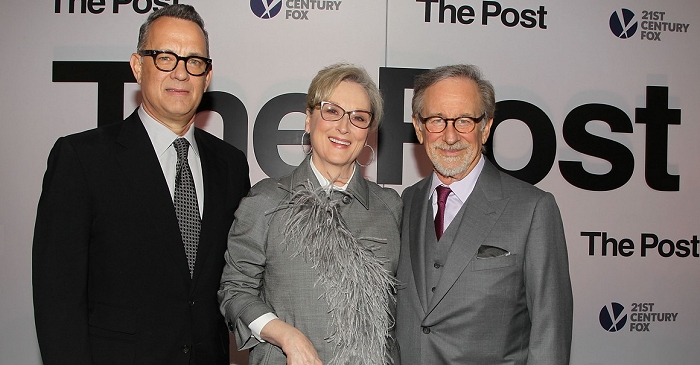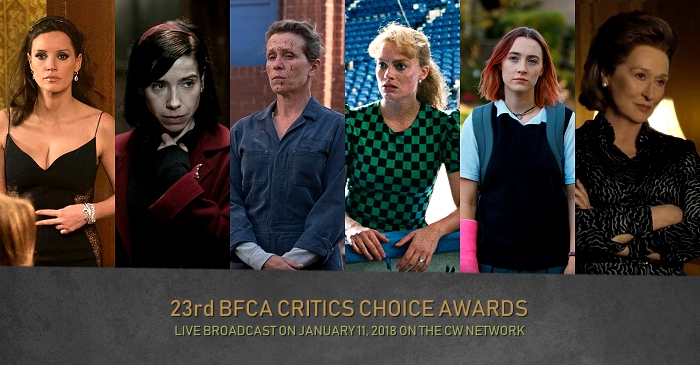|
Simply Streep is your premiere online resource on Meryl Streep's work on film, television and in the theatre - a career that has won her acclaim to be one of the world's greatest living actresses. Created in 1999, Simply Streep has built an extensive collection over the past 25 years to discover Miss Streep's body of work through thousands of photographs, articles and video clips. Enjoy your stay and check back soon.
|
It’s a wrap for the “Movie of the Week”. Within the last year, every film has been spotlighted, and I’ve saved the best for last – Meryl’s performance as Lindy Chamberlain in Fred Schepisi’s “A Cry in the Dark”. New DVD screencaptures have been added alongside new production stills and promotional pictures. Three new clips have been added to the video archive. Production notes and review after the cut. Additionally, you can check the site special on the real Lindy Chamberlain. As always, please share your thoughts on “A Cry in the Dark” in the comments.
No murder case in the Australian history has been as notorious as Lindy Chamberlain’s. In 1980, the Chamberlains went on a camping trip to Ayers Rock, when their infant daughter disappeared from the family tent. Media attention was drawn immediately to the case because of the Chamberlain’s statement that a dingo took baby Azaria. The nationwide condolences quickly shifted to disbelief – because no previous Dingo attacks have been known and also because the Chamberlains were members of the Seventh-day Adventist Church. Their story continued to dominate the headlines, and their public efforts to set rumors straight only backfired. The finding of Azaria’s jumpsuit some weeks later, folded and with signs of fingerprints, raised further questions. A first inquiry, held in Alice Springs in December 1980, supported the Chamberlains’ account of Azaria’s disappearance. The Supreme Court quashed the findings of the initial inquest and ordered a second inquest. By an indictment presented to the Supreme Court of the Northern Territory in September 1982, Lindy Chamberlain was charged with the murder of Azaria Chamberlain and Michael Chamberlain was charged with being an accessory after the fact. Both were both found guilty as charged. In 1985, after the release of John Bryson’s book “Evil Angels”, British producer Verity Lambert secured the film rights to bring Lindy Chamberlain’s story to the screen. While every Australian knew the Chamberlain case, their story was rather unknown in the wider world, so Lambert’s attempt in getting an international star succeeded when Meryl Streep, her personal first choice for the part, agreed to do the film after reading the script. Director Fred Schepisi was no stranger since he worked with Meryl and Sam Neill on “Plenty” before. By the time production started, Lindy Chamberlain was still imprisoned.
There were enormous legal considerations over every line I said, because Lindy Chamberlain was pressing the government to be exonerated. Along with all the other challenges of making a movie, to have lawyers sitting there… There was no doubt in my mind that she was innocent. And they did exonerate her, after the film. But because of her manner, she was condemned. She wasn’t the weeping, screaming, bereaved mother – she was more like ‘None’a your fucking business how I feel!’ There are people you just want to tell, ‘You know, you’ll get further in life if you just…’ She was vilified for the shape of her eyebrows, because they pointed down and she looked mad all the time. (Meryl Streep, Entertainment Weekly, March 2000)
The case further evolved during the making of the film. New evidence emerged in 1986 when a remaining item of clothing was found – which the police had maintained for years did not exist. Lindy was released from prison, and her life sentence was remitted. The Chamberlains were acquitted by the Supreme Court in September 1988 and their convictions were overturned. Just in time, “A Cry in the Dark” released theaters in Australia to critical success. The New York Times called her performance “stunning… with the kind of virtuosity that seems to redefine the possibilities of screen acting.” Streep won the AFI Award, Australia’s Oscar equivalent, she was awarded Best Actress at the Cannes Film Festival in 1989, the New York Film Critics Circle Award and received Golden Globe and Academy Award nominations.
Frederik’s Review
In “A Cry in the Dark”, Meryl Streep delivers a tour-de-force performance and succeeds in giving Lindy Chamberlain a voice for the Australian public and a face for the wider world. The film’s advantage is the script’s almost documentary style – what you see is what happened. If you have a look at bits from the original case, the resemblance is eerie. When she appears on the screen, she dominates the film with brilliance. Accounts and speeches have been taken from court papers word for word, so the film does not leave room for interpretation. Also, director Schepisi doesn’t exclude the moments in which the Chamberlains failed to do the right thing, such as the press interview in which Lindy explains how dingoes peel their victim’s skins. It gives you an idea why people started to question her testimonies and her character. And this is the film’s challenge – you sense that Lindy’s behavior, her firm belief in truth and her religion leads to wrongful accusations and eventual imprisonment, as the film focuses as much on the public interest in the case and the media frenzy as it accurately chronicles the case. At times you wonder why she doesn’t act more like the public expects in order to get ouf of this story safe – but then you realise that this isn’t fiction. The acting by Streep and Sam Neill is outstanding. Meryl Streep has the character fully emerged. There is never a moment when the actress shines through. This is, in my opinion, her best performance.

















